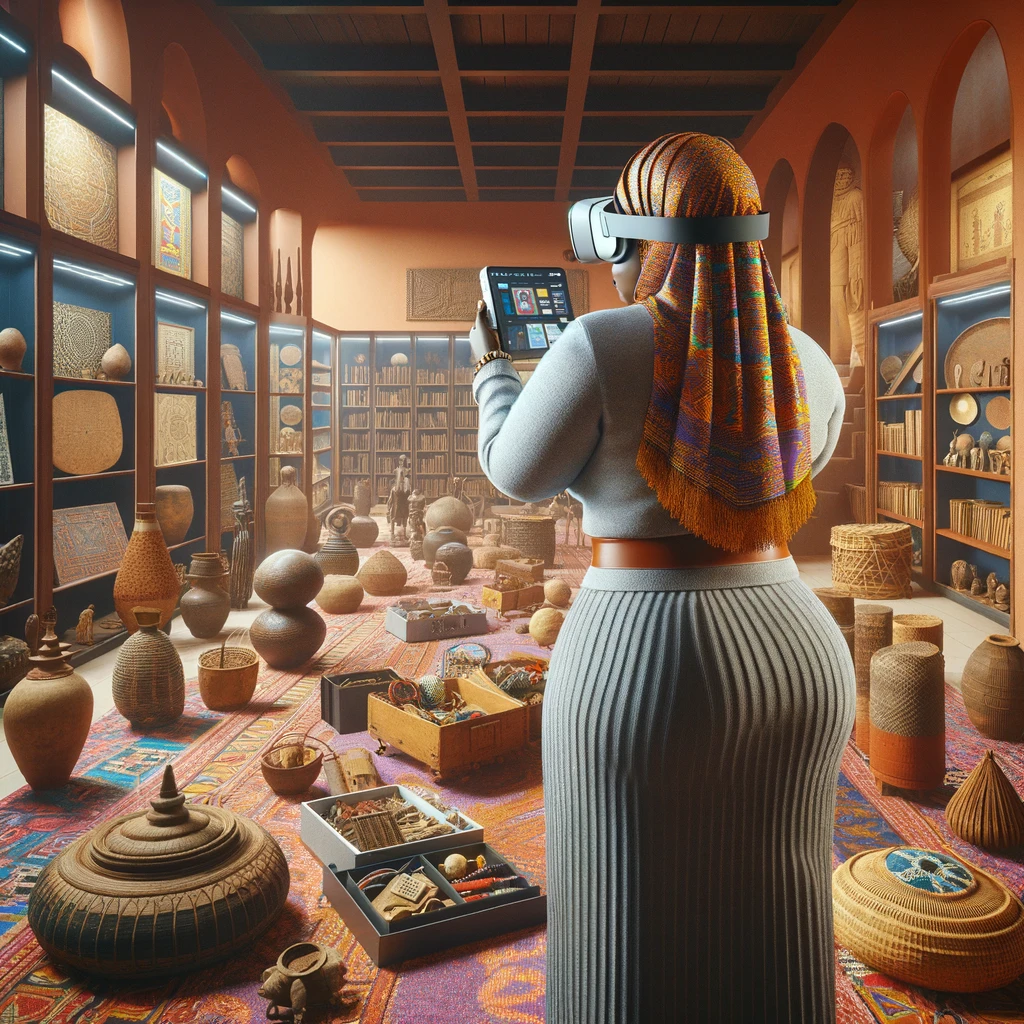
27 Aug The Fragility of Virtual and Augmented Reality: Lessons from Mozilla Hubs and Spark AR
The Fragility of Virtual and Augmented Reality: Lessons from Mozilla Hubs and Spark AR
The allure of Virtual Reality (VR) and Augmented Reality (AR) lies in their ability to transform the way we interact with the world. As a tool for Galleries, Libraries, Archives, and Museums (GLAMs), VR and AR offer unprecedented opportunities to create immersive experiences that engage audiences, preserve cultural heritage, and extend access to collections beyond physical limitations. Yet, as recent developments with Mozilla Hubs and Meta’s Spark AR have shown, the excitement of innovation comes with its own set of challenges.
The Impact of Mozilla Hubs’ Shutdown
For many creators, Mozilla Hubs was a beacon of what VR could offer. It allowed the creation of dynamic, interactive spaces that could host everything from digital exhibits to collaborative meetings. I, too, invested significant time in learning about Mozilla Hubs, exploring its potential as a tool for GLAM institutions. The platform’s ease of use and accessibility made it a favored choice for digital exhibits and preservation efforts, particularly in educational settings like SJSU, where an entire program was developed around it to familiarize students with VR and AR tools.
However, the abrupt shutdown of Mozilla Hubs serves as a stark reminder of the fragility of digital tools. Many creators, institutions, and educators who relied on Hubs for their projects were left scrambling to find alternatives or salvage their work. The closure underscores a harsh reality: no matter how innovative a tool is, its longevity is not guaranteed.
Meta’s Spark AR and the Risks of Dependency
Today, I received another piece of disheartening news—Meta is closing Spark AR to third-party creators. This move is yet another blow to the VR and AR community, especially for independent creators who have invested countless hours mastering the platform. Spark AR was a powerful tool that allowed users to bring augmented reality experiences to life, and its closure raises concerns about the sustainability of relying on proprietary platforms for long-term projects.
Navigating the Uncertainty of Emerging Technologies
As an independent information professional and archivist who works with GLAMs to implement VR and AR, these developments are particularly concerning. The institutions I work with are already grappling with how to integrate these technologies into their preservation and engagement strategies. The uncertainty surrounding the longevity of platforms like Mozilla Hubs and Spark AR only adds to their concerns.
Innovation is undoubtedly exciting, and the possibilities that VR and AR present are vast. However, as new tools emerge and old ones fade away, it’s crucial for us to be prepared. The time and effort invested in these platforms are significant, and the risk of losing that investment due to platform shutdowns or shifts in corporate strategy is real.
Preserving the Digital: Strategies for GLAMs
So, how do we navigate this landscape? Here are a few strategies that GLAMs and information professionals can consider:
Diversification of Tools: Relying on a single platform for VR or AR projects is risky. By exploring and integrating multiple tools, institutions can reduce their dependency on any one platform.
Data Backup and Migration: Regularly backing up content and being prepared to migrate it to other platforms is essential. Understanding the export options and data portability of the tools you’re using can save significant time and effort if a platform shuts down.
Open Source Alternatives: Where possible, consider using open-source platforms that offer greater control over your projects and data. These platforms are often community-driven, reducing the risk of sudden shutdowns.
Continuous Learning and Adaptation: The digital landscape is ever-changing. Keeping up with new developments, tools, and best practices ensures that institutions are ready to pivot when necessary.
Collaboration and Knowledge Sharing: Engaging with other professionals in the field to share experiences and solutions can help build a collective knowledge base that benefits everyone.
Moving Forward with Caution and Optimism
The closures of Mozilla Hubs and Spark AR are a reminder of the volatility that comes with technological innovation. While these tools have offered incredible opportunities for GLAMs to engage with their audiences in new ways, their impermanence highlights the need for a cautious approach.
As we continue to explore the possibilities of VR and AR, we must do so with an understanding of their fragility. By preparing for the unexpected and ensuring that we have the knowledge and experience to preserve, back up, and migrate our work, we can mitigate the risks and continue to push the boundaries of what is possible in the digital world.
In the face of these challenges, the role of information professionals and archivists becomes even more critical. Our task is not just to create and implement, but to safeguard the digital legacies we are building. And while the road ahead may be uncertain, it is also full of potential for those willing to navigate it with both caution and creativity.



